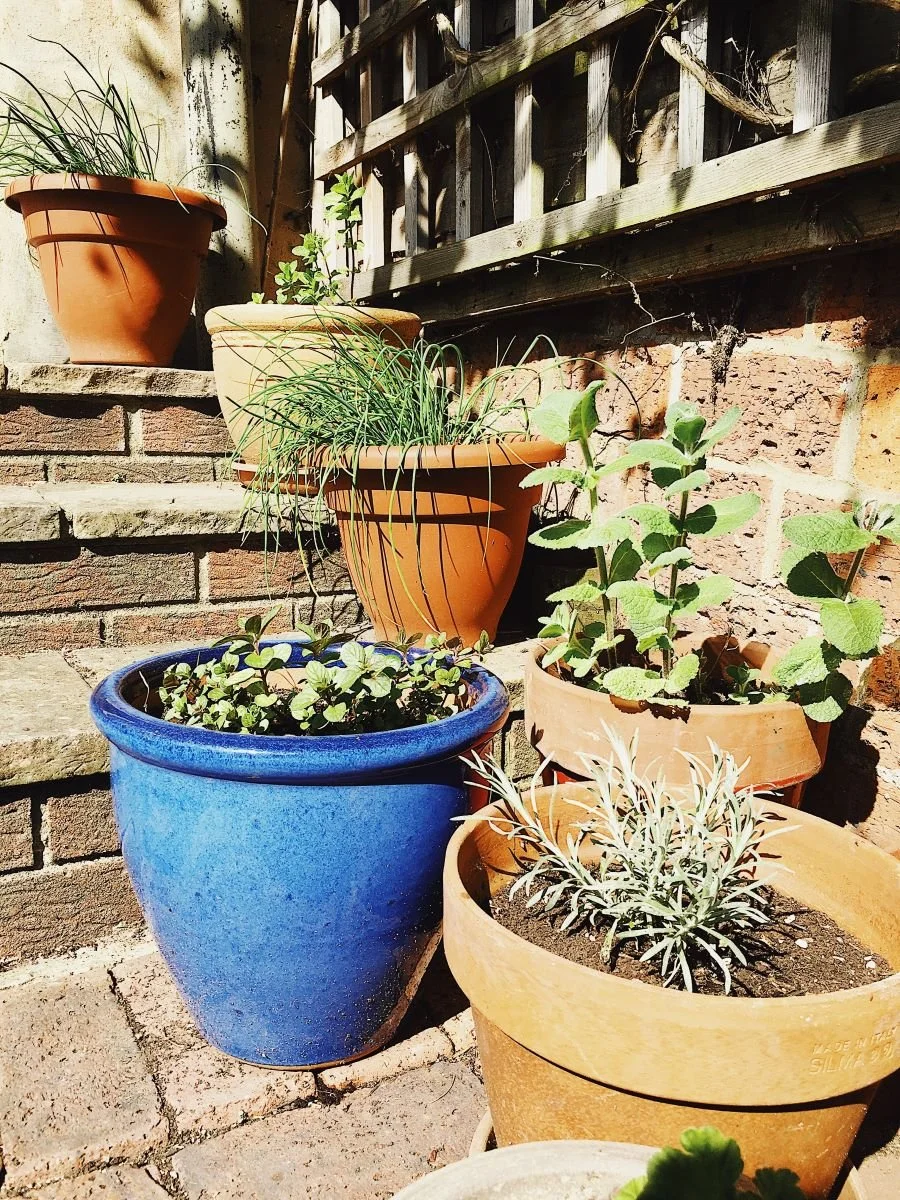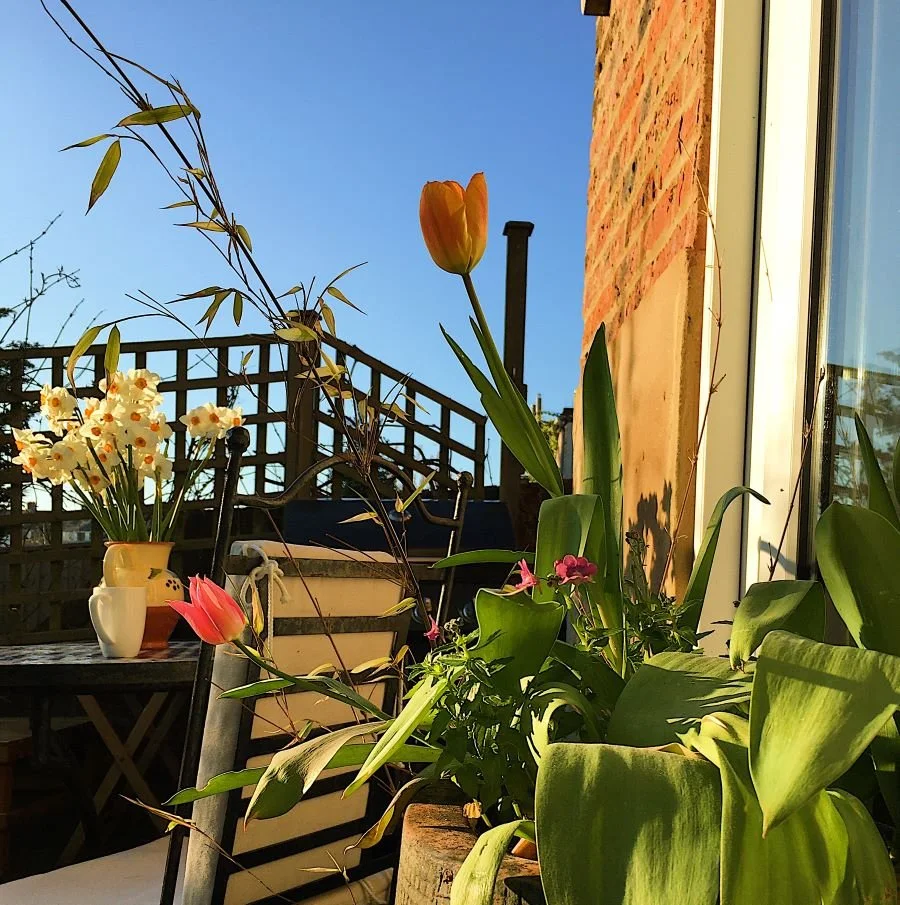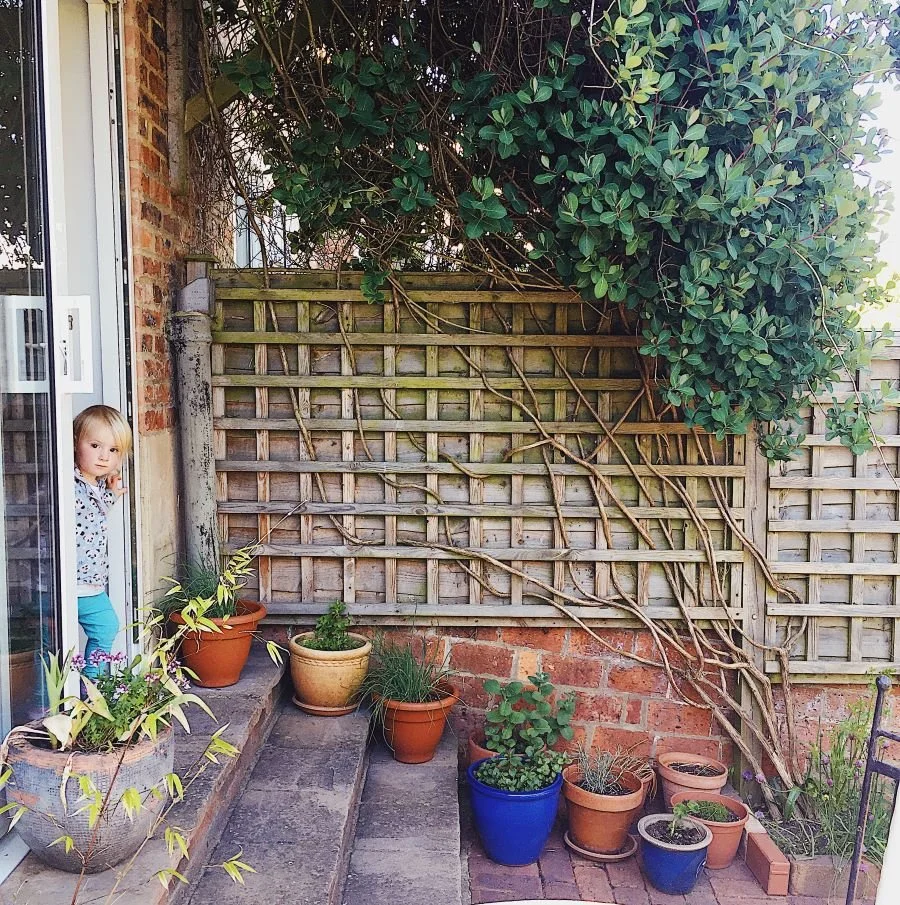Cheap and Sustainable Garden Landscaping. Your how to.
Taking on a new garden, or staring at an old un-loved garden wondering what to do with it can be daunting. Ever dreamed of a garden filled with colour, herbs, vegetables, perhaps an urban jungle? It’s something most of us do but don’t know where to start. You pop to the local garden center to buy a few plants, spend what you think is a lot only to bring them home, plant them and realise they are totally lost in the garden and have hardly made a difference.
Landscaping this whole thing is going to cost a bomb right? Wrong. Landscaping and filling your garden can be done cheaply, and this cheap way is often the most eco-friendly and zero waste way you can do it. And that my friends is my kinda gardening.
So where do you start?
1.MAKE A ROUGH PLAN.
Making a plan can help you budget if you do spend any money and help you know what your looking for. But it doesn’t mean you have to completely stick to it. If you find something you love, cool throw it in. But only if you love it, don’t just get it because it’s free or cheap. You’ll end up being annoyed and having to get rid. Believe me I’ve been there.
Don’t freak out if you don’t know where to start with a plan or feel you need to consult an expert. Just think about what part of the garden will work for what.
THINGS TO INCLUDE IN YOU AFFORDABLE, ECO GARDEN PLAN.
Destinations.
Gardens are there to be enjoyed by you as well as the wildlife. It’s pleasing to the eye when there’s a destination to walk to however small your garden (by this a mean a little seating area for example). It makes a nice place to sit and also helps you put more interesting bits around that “destination”. Seating areas or “destinations” can be the basis of you plan.
You might not think it but shady areas where you may struggle to grow things are good for a seating area. Yes shade, my 21 year old self wouldn’t believe I said that but gardens get hot when the suns out. Often high walls and fences block out any breeze, so a nice shady stop can make the perfect spot for a cuppa.
Add eco-friendly paths.
If you’ve got a plain old lawn in your garden and you want to make it interesting think about adding a simple free path way. Winding path ways or making them zig zag across the garden will make a small garden appear bigger because it draws your eyes across rather than a straight down the middle pathway.
Use wood chips, or reclaimed paving stabs for a free option or gravel for a budget friendly but slightly more elegant option. Old bricks are a good option for making out a gravel path and giving it a boarder.
Landscape with pots.
Filling your garden with pots will add layers and texture. Plus it’s a super easy, cheap and eco way to fill your garden.
Never buy new, it’s so easy to find lovely vintage pots. Junk yards, the tip shop, thrift stores, charity shops all have an amazing selection of pots. It doesn’t matter that they don’t match, that’s really the beauty of it. Just put them together with different height pots, and different height plants to add interest. Play around with it, put some together, step back, move them around again until your happy. The best bit for me is rearranging every season as different plants come out. It keep things feeling fresh and different whenever I want.
Though I have of course brought many a plant from the garden center or supermarket, I’m really trying to avoid it lately. Mainly because it’s hard to know how they have been grown and what they have been sprayed with. Turns out even plants sold as “Bee friendly” could have been sprayed with Bee harming pesticides.
I’m finding the best way to source organic Bee friendly plants is to either grow from seed (I buy from The Organic Catalogue) or buying plants from them. I then propagate said plants and plants I already have to spread around the garden. Propagating is totally free, easy and very satisfying. Check out “How to Source Budget Organic Plants” for everything you need to know to start doing this.
Your paths, seating areas and locations for clusters of pots will all form a nice plan for you and help you think about what you can add in to the left over spaces.
2.Think vertically.
Everything looks better when there layers, height and different texture. Especially for smaller gardens, by drawing the eye up it will feel instantly bigger. Not to mention prettier.
Vertical garden can be done in a number of ways.
Planting with climbers. Honey suckles, wisterias, jasmine, clematis or trees like Sambucas and other elderberry trees will grow up fairly quickly, can be grown freely from cuttings if you know someone with them or brought cheaply. They will add height and depth to you garden, even hiding unsightly fences or walls.
Creating living walls. This can simple be done up hanging pots onto fences, buying wall modules like these, or if your feeling up to it repurposing pallets or even old drain pipes to create more planting space.
Hanging Baskets. Theses aren’t just for your Nan to hanging bedding plants by her front door but could be used for anything from pretty trailing ivy’s to trailing tomato plants.
3. Reclaim and Repurpose.
It goes without saying that reclaiming stuff for you garden and repurposing things you already have or can find is the most eco-friendly and budget friendly thing you can do in your garden.
My favorite go to for this is the tip shop. I’m sure your local tip site has one too. From garden chairs to rakes and trowels. You really don’t need to spend a lot to furnish and fill your garden. Sure sometimes it takes a little longer, sometimes it takes a little up cycling (something I’m not so good at so often wait for things that don’t need work), but it’s definitely worth it. Even if you just get some chairs to see you through for now. I did this while I saved and ultimately ask for as a birthday present a beautiful tiles table and chairs from a local business.
4. Adopt a woodland planting system.
If you’ve got some bigger trees in your garden, you may see the area underneath them as a little barren land. This need not be the case if you adopt ideas from a natural woodland.
The canopy is the tree at the top providing shade and habitat for birds etc. The understory and shrub layer, is usually shrubs and immature trees around 5m tall but can consist of small fruit tree or current and berry bushes. Lastly herbaceous and ground cover crops can go under your tree. Not only does this provide a nice little home for insects and help improve the health of you soil, these will fill areas you didn’t think you could make beautiful and suppress the weeds. Crops like Wild Strawberries and Wild Garlic do particularly well in these conditions. As well as other plants you would find on a woodland floor like Snowdrops in late winter and Bluebells in the spring. If you want more edibles like I always do, chives and fennel will also grow well in these areas.
5.Leave a wild area.
As the term re-wilding because more common and councils try to “re-wild” some areas of our towns it’s also important to remember that in urban areas this is not really possible. To re-wild we need all of nature. Including animals to graze the land, and large predators, not something you’ll find down the back alleys or the streets of my local town. However I think it is important to use the term lightly and let areas of our gardens and town go a little wild with our help.
If your lucky enough to have a decent amount of space in your garden why not let one section of the garden go “wild”. You’ll still need to look after it a little, stimming the grass down a couple of times a years (follow the RHS’s guide to wild flower meadows and cutting 3 times a year) and perhaps throwing in a few wild flower seeds. However this area will be super low maintance. In my opinion this looks beautiful and will attract all the pollinators. What’s not to love?
6.Door step herb garden.
I’m a huge fan of a door stop herb garden for a number of reasons. They are super cheap to start, even buying a few potted herbs from your local super market, splitting them and potting them into your reclaimed pots will do the job, though starting from seed is also very easy. You can arrange them to look beautiful on your front and or back door. They will flavor your cooking with you barely having to step out into the rain. Herbs will flower and look beautiful. They smell great. Imagine your friends ringing the door bell and getting a wafted of lavender while they wait for you to answer. Pretty sure I’ve sold this to you now.
7. add A Lick of paint.
It’s amazing what a lick of paint can do. That greying old fence, and the tatty looking shed you’ve inherited don’t really need replacing just a new lease of life. You’d be surprised what a fresh colour, some bunting (if that’s your thing) some solar light hanging to the outside and even some cute curtains to the shed widow if you so wish could do.
8. Add eco lighting.
Head to the Ethical Superstore to find some beautiful and very affordable solar lighting. You’ll turn your dark night garden into a fairy wonderland you want to hang out all evening in with your friends drinking wine.
9. Move plants around.
It’s tempting when things aren’t the way you want them to be to go in a rip out everything to start with a blank canvas. However, I urge you to really look at what’s in your garden, Just because it’s not flowering or looking lovely now doesn’t mean it wont.
For example a tatty old bush on the allotment I recently took over turned out to be a Gooseberry tree. An old rose bush in my garden that never did anything just needed a good prune and looking after. I nearly ripped both up but now they are flowering beautifully.
You also have the opportunity to move plants around. Just because you don’t like them where they are now they could fill a less prominent space that you won’t really see, but it would be a shame for it to be bare, or worse to spend time and money filling it with something else for the sake of it.
The best time to move plants is in the autumn. This means while the soil is still warm they can get some new roots down nicely. They are also not putting any energy into flowering so that the best chance of survival then.
Extra ideas to make your garden more eco-friendly.
Add water.
Wild life need water. Where that be a tiny bird bath for them to drink from, or a small pond for frogs to live and hoover flies to breed in.
Add a compost bay.
I’m passionate about composting. If you want to get started it’s super easy. From simply chucking your potato peelings and dead flowers in a bin (see A Beginners Guide to Composting), to getting super serious and using ALL your waste with a Bokashi System (see Bokashi Composting 101), I’ve got you covered for almost everything.
Encourage drainage and practice Xeriscaping.
Xeriscaping was an idea developed in the 80’s to help avoid drought. However, even if you do not live in an area prone to drought Xeriscaping is a good thing to keep in mind when designing you garden.
There will always be (in most countries) some hot periods in the summer when you’ll find you need to water, so the less you need to do this not only saves you time but save your water bill.
The first thing to do when xeriscaping is to plant vegetation that is local to your area. Native plants will already be adapted to your climate and therefore need very little added extras.
Using methods such a No Dig, adding mulches to your soil, having free draining paths like woodchip or gravel will also encourage healthy soil which in turn will hold water better. Therefore reducing the need to water.
Other articles you might enjoy..
Zero Waste Gardening. The Ultimate Guide.
21 Ways to the Perfect Garden with NO Money.
How to Source Budget Organic Plants.
Beginners Guide to a Sustainable Herb Garden.
How to Make More Compost and Cut Family Waste.










